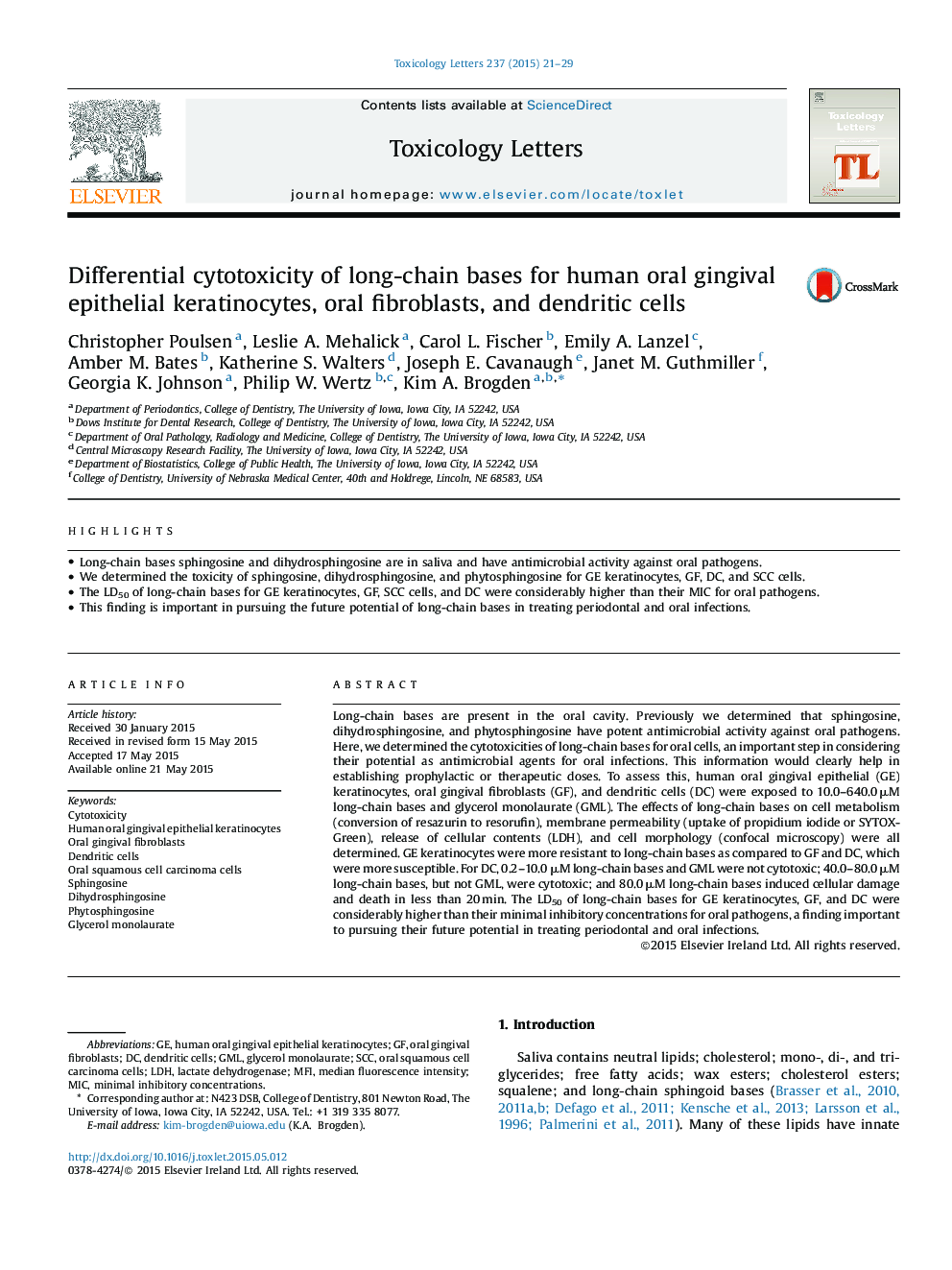| Article ID | Journal | Published Year | Pages | File Type |
|---|---|---|---|---|
| 2598856 | Toxicology Letters | 2015 | 9 Pages |
•Long-chain bases sphingosine and dihydrosphingosine are in saliva and have antimicrobial activity against oral pathogens.•We determined the toxicity of sphingosine, dihydrosphingosine, and phytosphingosine for GE keratinocytes, GF, DC, and SCC cells.•The LD50 of long-chain bases for GE keratinocytes, GF, SCC cells, and DC were considerably higher than their MIC for oral pathogens.•This finding is important in pursuing the future potential of long-chain bases in treating periodontal and oral infections.
Long-chain bases are present in the oral cavity. Previously we determined that sphingosine, dihydrosphingosine, and phytosphingosine have potent antimicrobial activity against oral pathogens. Here, we determined the cytotoxicities of long-chain bases for oral cells, an important step in considering their potential as antimicrobial agents for oral infections. This information would clearly help in establishing prophylactic or therapeutic doses. To assess this, human oral gingival epithelial (GE) keratinocytes, oral gingival fibroblasts (GF), and dendritic cells (DC) were exposed to 10.0–640.0 μM long-chain bases and glycerol monolaurate (GML). The effects of long-chain bases on cell metabolism (conversion of resazurin to resorufin), membrane permeability (uptake of propidium iodide or SYTOX-Green), release of cellular contents (LDH), and cell morphology (confocal microscopy) were all determined. GE keratinocytes were more resistant to long-chain bases as compared to GF and DC, which were more susceptible. For DC, 0.2–10.0 μM long-chain bases and GML were not cytotoxic; 40.0–80.0 μM long-chain bases, but not GML, were cytotoxic; and 80.0 μM long-chain bases induced cellular damage and death in less than 20 min. The LD50 of long-chain bases for GE keratinocytes, GF, and DC were considerably higher than their minimal inhibitory concentrations for oral pathogens, a finding important to pursuing their future potential in treating periodontal and oral infections.
